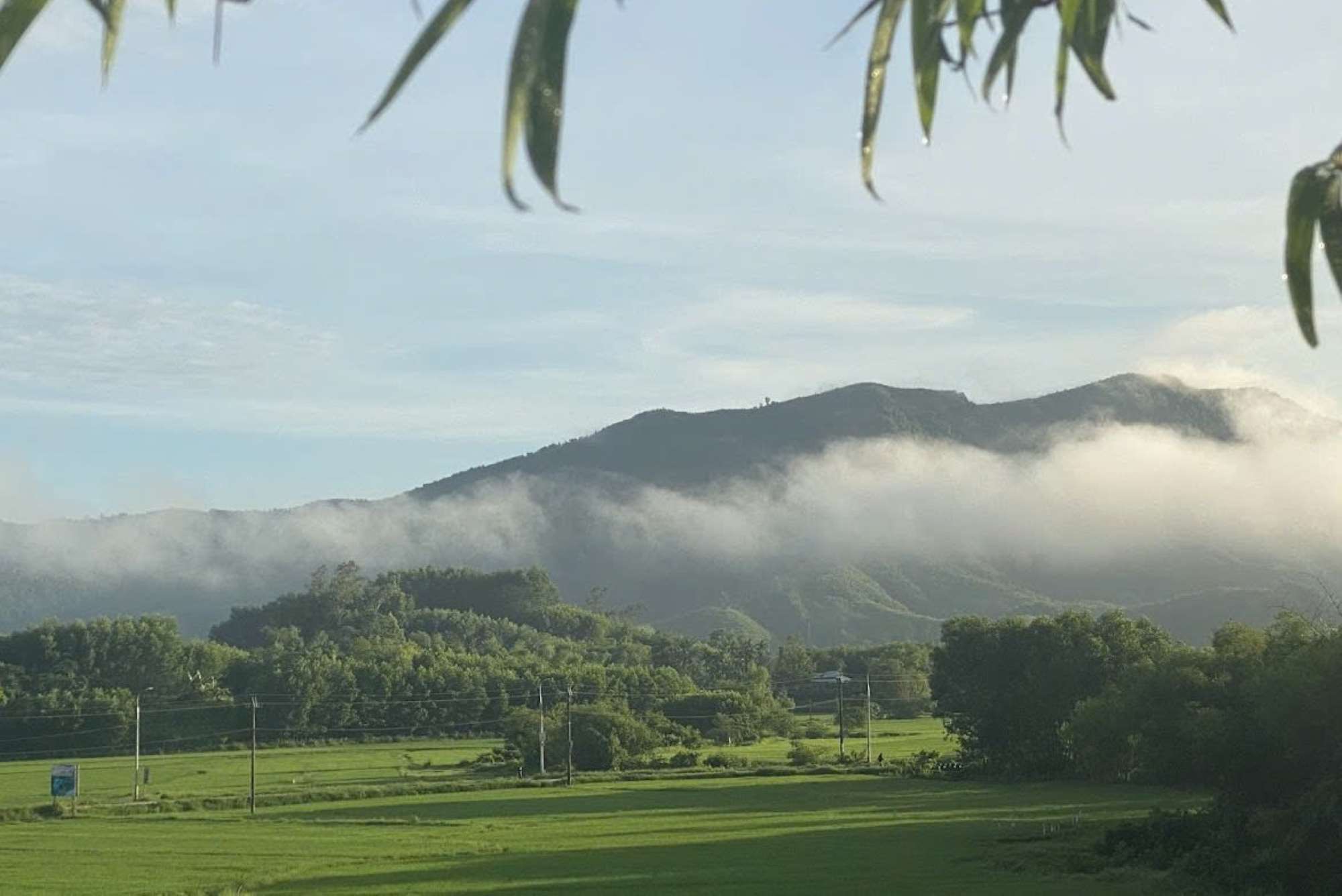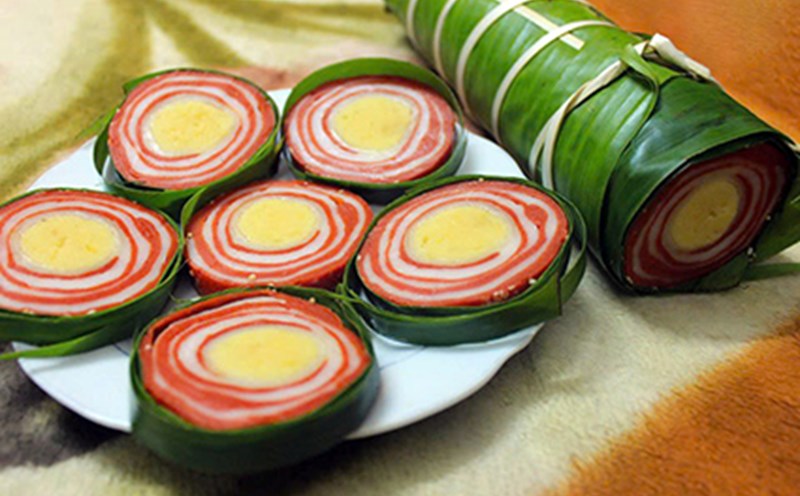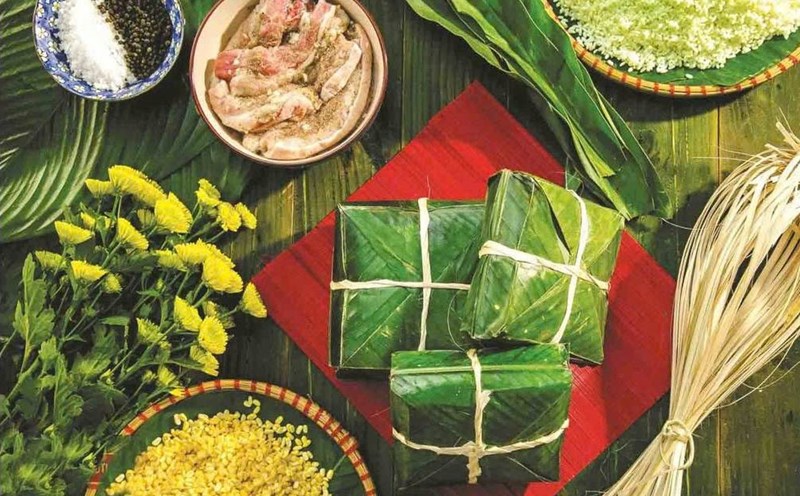Why do stories last forever? Because they are no longer stories but have become flesh and blood, seeping into the skin, penetrating every cell, turning into genes silently passed down through each generation. They form personality, identity, and become unique characteristics like the mountains and rivers of this land…
There is a spring flower in memory
I eagerly waited for the drizzle of the last days of winter to stop, for the new rays of sunlight to appear in the eastern sky. I took my sickle and flew towards Ca Tang peak. I had to be the first to cut the young green grass, sweet grass, sedge grass, and bitter grass for the buffaloes. I had to cut a lot so that they would be full for the three days of Tet, so that I could freely roam around...
I think my buffaloes also need to celebrate Tet and enjoy spring like me. The soft, sweet, nutritious grass that has accumulated in the spring sunshine will be enjoyed by my buffaloes. I stood there, watching them chew peacefully and leisurely as if they had just shed all the worries and hardships of the old year, to welcome the new year. I scooped up a bucket of clear water and watched them drink it all, my heart filled with joy.
With that done, I started preparing myself for spring.
I crossed the hill of cogon grass, went up the small forest to Bang Sim valley. I went to look for the Rang Sam flower branches, which to me, just seeing them made my heart flutter. I like the yellow apricot blossoms, but I don’t know why, since when, I have loved the Rang Sam branches with an unusual passion. The pale yellow petals, spread out in four, blooming to cover the canopy, tilting in the early season wind, have made me ecstatic since I was a child. I cut the most beautiful branches, carefully holding them on the way home through the forest, making sure they don’t get tangled with the forest trees and drop the petals. I picked up the eel-skin earthenware jar that my grandmother used to pickle cabbage, washed it, filled it with water and placed the Rang Sam branches in the middle of the house.
On January afternoons, in the cool, gentle breeze, I lie on my back under the Rang Sam tree and look up at the deep blue sky. I don’t know what’s out there, where the universe will take me, but I know for sure that my homeland is peaceful with every breath. Spring is caressing the village and the mountains, the beautiful Thu River of my hometown. I miss my mother and the pot of banh tet, the cakes made with mung beans, sticky rice and the stack of newspapers placed on the charcoal tray. I regret January and fear that it will pass as quickly as the winds sweeping across the hilltops.
I look at the flowers all spring without getting bored!
My mother said I was abnormal, but my belief in the beauty of this flower was so ingrained in me that no criticism could shake it. However, in March of that year, people burned cogon grass, the fire spread, burning down the entire forest and Bang Sim was in the sea of flames. My whole village went up to the mountain to put out the fire for four days without stopping. A week later, Ca Tang mountain looked like a black, bare piece of coal, full of wounds, my heart was so sad that it bled.
My father said that Rang Sam is like apricot blossom tree, the wood is hard so it takes more than ten years for them to grow and flower. I felt even more heartbroken when the Rang Sam trunks as big as calves were burned dry, bare, and withered by people cutting them down for firewood. How long must I wait to find my own dreamy flower branch?
I went out into the street and left the flowers far away, on the mountain reflecting in the river. Now on that peak, behind the mist, I wonder if the flowers bloom because of my love…
Snakes under thatched roofs
At the end of spring, my village often re-thatches old thatched roofs, rotten by the rain and sun of time. The story of roofing in my village is also very strange, different but full of love. People do not call each other, do not make appointments in advance, do not exchange work, but whenever someone roofs a house, the whole village stops working and comes to help. They finish roofing, look at it in its entirety, fix it over and over again until the last layer of thatch is ready to go home.
Waiting for the hot, blazing sun and no afternoon rain, my mother cut the thatch, dried it, and carried it home to put in the backyard. My father waited for the bright moonlit nights to spread the thatch out on the porch and weave it into roofing sheets. He counted the number of thatches needed, usually more than 100 for a three-room, two-wing house, and chose a beautiful morning to climb up to the roof to dismantle them.
My father removed the old rotten thatched roofs and snakes as big as a bicep, nearly two meters long, crawled out. The snakes had been living peacefully with my house for many years on the rafters, specializing in catching mice. My village called them Dragon snakes, but I don't know their exact scientific name. My mother told me to let them crawl to the edge of the forest and they would return after a few days. There were snakes in the house, mice that destroyed the rice warehouse, gnawed on the cassava and potatoes and hid. My brothers and I weren't afraid of them because my father said this snake species was not poisonous and lived in harmony, and told us not to harm them.
No one in my village ever eats snake meat!
The sound of banging on my father’s thatched roof was like a signal that my house was being repaired. And so my neighbors came. Some held machetes, some held hoes, shovels, chisels, drills… nearly twenty men in the neighborhood happily helped my father. They laughed and talked animatedly about current events around the foot of the mountain. My mother prepared food for mid-morning meals, lunch, and some snacks and a glass of wine at dusk.

That’s how my village is, in the spring the men like to help each other re-roof the houses. My father said this tradition has been around since the village was founded. But how far back that was, I don’t know. I guess it’s been at least five generations. My grandfather said he followed his father up the Thu Bon River on a bamboo boat. He stopped at Trung Phuoc wharf and reclaimed land to survive two wars.
Villagers told each other that in this valley, the traces of Nguyen Duy Hieu's army are still imprinted in every piece of land and place name. The Cemetery where those who died for the cause were buried in the war, or the Weapon Forges are still there. It is engraved in the land as a landmark through the place name, but helping each other build houses and re-thatch roofs is perhaps the most eloquent proof of the group of people protecting and taking refuge in each other during the migration.
And the opening glass of wine
No one in my village dares to enter the forest without performing the New Year's worship ceremony. The Cay Si shrine at the entrance of the field has a picture of Mr. Cop with fierce eyes and sharp teeth bared like the forest god who rules the land. On the 7th of January, incense smoke rises here. The villagers pray for a peaceful year for the residents of the whole area.
The village custom has existed for hundreds of years, no one knows for sure, but it has been followed from generation to generation. They keep the rules of conduct with the forest as if they kept a curse in their hearts. After the offering, the person pouring the wine on the ground along with a prayer, I guess it is a prayer and thanksgiving to the forest.
I stood in the crowd bowing to the forest shrine and looking towards the cloud-covered peak of Ca Tang Mountain. I am grateful to the land where I was born and raised. Grateful to the village and its customs that gave me patience, pause, and even slowness. It is like a brake on the dangerous, fast-moving road of life that is rushing ahead. The land is a place to return to and to anchor oneself in times of danger.
A glass of wine of gratitude poured down from heaven and earth not only reminds descendants of the pioneers but also to preserve the soul of the homeland for future generations.
Once, I went back to my village with some friends to make wine. My whiskey was made from grains from my hometown soaked in American White Oak barrels, the amber color was so fragrant that it was astonishing. I named the wine after the mountain in my hometown. Catang whiskey, Katan whiskey... and a friend brought it all the way to America to compete in a wine festival. Surprisingly, my group's wine won a bronze medal for traditional whiskey. The day my friend posted the sparkling medal online, I thought my mountain had flown away with the clouds.
I poured my whisky with a sincere heart toward the mountain, and sprinkled it gently upon the land with a deep gratitude. I was grateful not only to the land, the mountain, the sky, but also to the deep water that made the whisky rich in flavor. More than that, that water was a part of my flesh and blood. It nourished me and my clan, supported the community where I grew up, and helped my village to produce generations of peaceful people.
And in spring, what more can we wish for our country to last forever!
Ca Tang Mountain has now gone through many springs, the old burns must have healed, the Rang Sam trees must have also bloomed with bright pale yellow flowers. I no longer chase the January winds like when I was a child, but every time I think about it, my heart still hears whispers from the mountains and forests, from the Thu River, from the buffalo herds, from the smoky thatched roofs, and from the honest and simple villagers. It turns out that hometown is not only the place where we were born and raised, but also the place that always lives within us, regardless of whether we go far or stay.
Spring is a time of new beginnings, a promise of good things, but for me, it is also an extension of memories. In my village, people never live only for the present. They live by gratitude for the past, by customs, by loving and caring for each other. The first glass of wine is not only to thank the mountains and forests, but also to remind that this land is a part of the flesh and blood, the deepest root of human life.
And if one day, any of us suddenly find ourselves lost in the dusty roads, we just need to turn back to the mountains, to the villages, to hear the echoes of our hearts. Our homeland never changes. It is still there, still waiting with open arms, like the Rang Sam branches blooming in the spring sunshine, like a glass of gratitude poured on this beloved land.
More than a spring, hometown is always the place that anchors our souls.
(Article from the Central Highlands - Central Spring Labor publication 2025)






